Lion is a big, powerful cat. It is probably the most famous member of the cat family. People are frightened by the lion’s thundering roar and impressed by its strength and royal appearance. The lion is called the “king of beasts,” and is a well-known symbol of both beauty and power.
Loading the player...Lion
Lions can live in cool climates and in the intense heat of semidesert areas. They do not like to live in thick forests. Most of them live in woodlands, grassy plains, and areas with thorny scrub trees. Lions live where they find a supply of food—deer, antelope, zebra, and other hoofed animals—and where they have a place to drink.
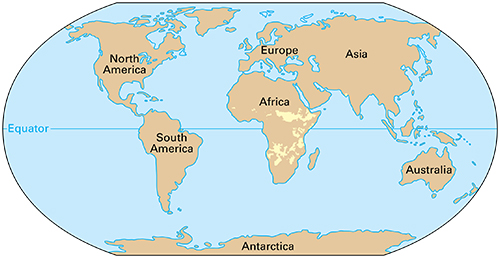
In ancient times, lions lived in Europe, the Middle East, India, and much of Africa. But human beings have killed thousands of lions as people settled in new areas. As a result, there are no more lions left in the Middle East and northern Africa. Only about 300 lions still live in Asia—all in a protected area in the Gir Forest of India. Lions still live in the eastern part of central Africa and in southern Africa. But most of these lions live in national parks and areas called reserves, where the animals are protected from hunters.
Hundreds of lions also live in captivity in zoos throughout the world. And trained lions are popular performers in circuses.
The body of a lion
The lion is the second largest member of the cat family. Only the tiger is larger. Lions are built for strength, not speed. A male lion usually weighs from 350 to 400 pounds (159 to 180 kilograms), but some weigh up to 560 pounds (254 kilograms). Most males are about 9 feet (3 meters) long from the nose to the end of the tail. They average about 4 feet (120 centimeters) tall at the shoulder. Lionesses (females) are smaller than males. They weigh only 250 to 300 pounds (113 to 140 kilograms) and are about 1 foot (30 centimeters) shorter.
Male lions are the only cats with manes. This collar of long, thick hair covers the head, except the face, and the neck down to the shoulders and chest. The mane makes the male look even bigger and stronger than he is. It also protects him during fights. The long, thick hair softens the blows of his foes. Young males have a little hair around their heads when they are about a year old. The mane is not fully grown until the animal is about 5 years old. Manes may be blond, brown, or black. Most are a mixture of these colors. They darken as the lion grows.
The lion’s coat is ideal for hiding. It is a brownish yellow, the same color as dead grass. Only the back of the ears and the tuft of hair at the end of the tail are black. Cubs (young lions) have spots on their coats.
Loading the player...Lions camouflaged by plants
The shoulders and forelegs of the lion are tremendously muscular. They give the lion the strength to clutch its prey and pull it to the ground. Each big, heavy paw is armed with curved claws that hook and hold the prey. When not in use, each claw withdraws into a sheath in the paw so the claws stay sharp.
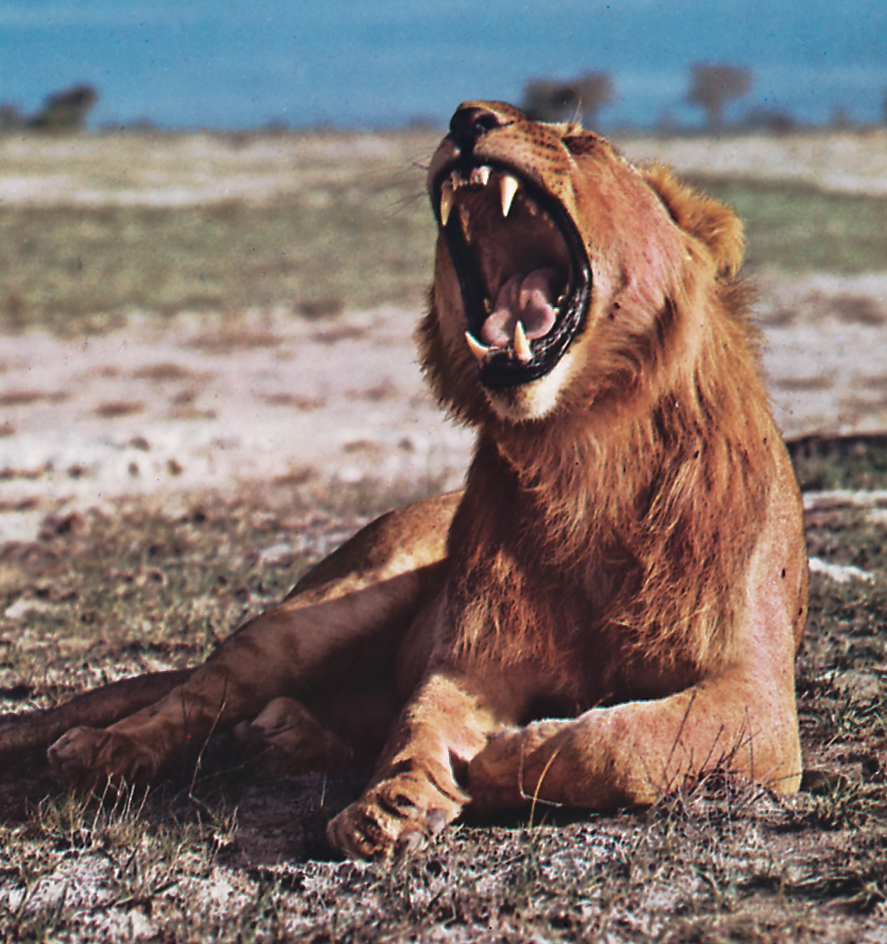
The lion has 30 teeth. The four large canine (pointed) teeth are used to hold the prey, kill it, and to tear the meat. Four cheek teeth called the carnassial teeth are for cutting through tough skin and the tendons that join muscles to bone. There are no teeth suitable for chewing. The lion swallows food in chunks.
The life of a lion
The lion is the most companionable of all cats. A pride (group) may include from 10 to 20 lions, or as many as 40. Each pride has from one to seven adult males, several lionesses, and cubs. The members of the pride may not always be together. Some of the lions may hunt in one place, a few in another. But when they are reunited, they greet each other by rubbing cheeks.

Life within the pride is peaceful. Lions usually spend about 20 hours a day sleeping or resting. Cubs chase each other and wrestle. A lioness sometimes twitches her tail while one of her cubs tries to catch the tuft of hair at the end of the tail. Hungry cubs nurse on any lioness that has milk, not just their own mothers.
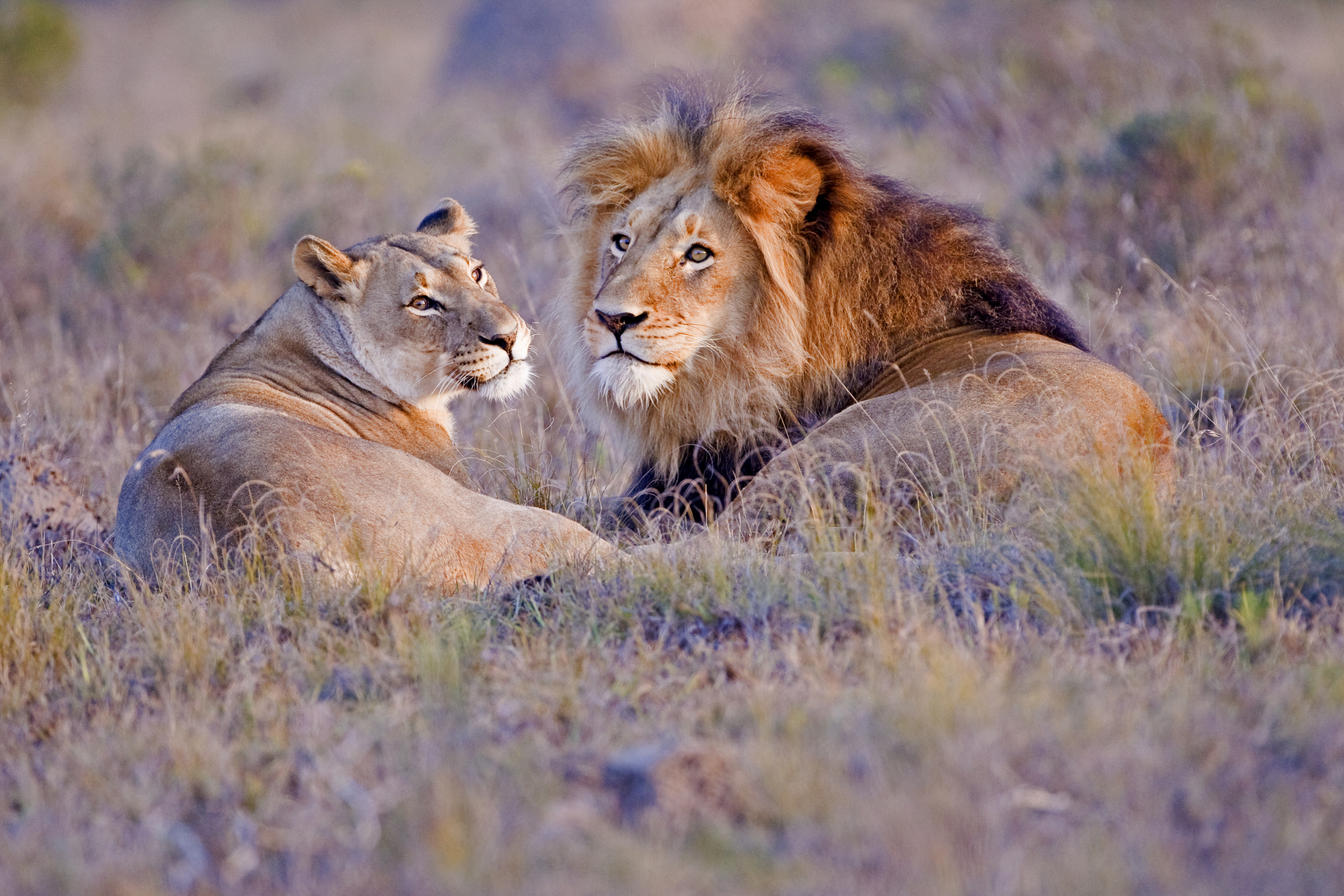
Lions usually walk about 5 miles (8 kilometers) in a day. If they have had a big meal, they may rest for 24 hours. But if they are hungry, they may travel as far as 15 miles (24 kilometers) in search of food.
Habits.
Each pride stays in a specific territory (area). The territory has food and water for the lions. Where prey is plentiful, the territory may cover about 15 square miles (39 square kilometers). Where prey is scarce, it may be 100 square miles (260 square kilometers).
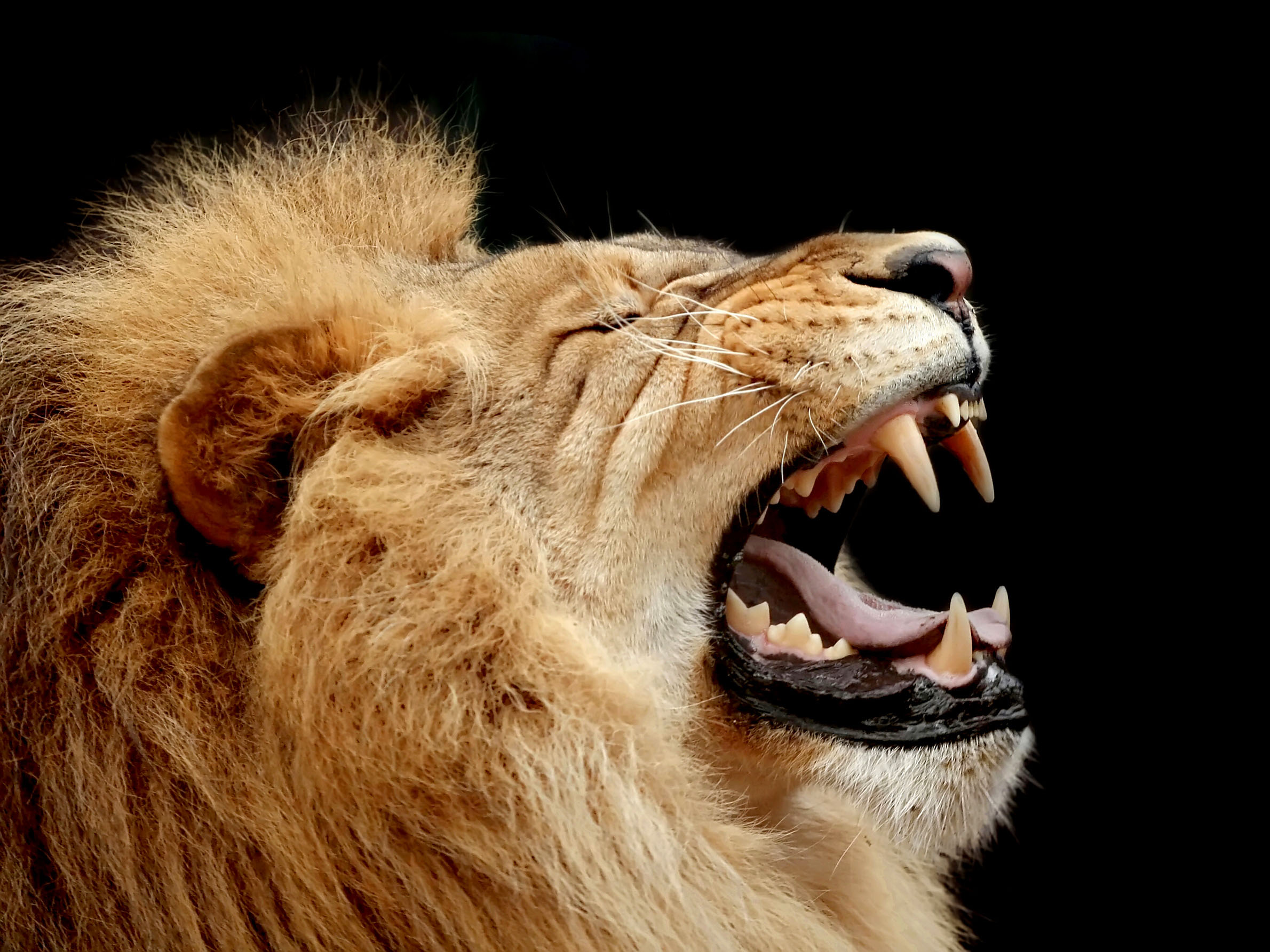
Lions do not allow strange animals to hunt in their territory. They warn intruders to stay away by roaring or by squirting a mixture of scent and urine on bushes. The strangers then know that the territory is occupied. If they ignore the warnings, they may be killed.
Pride members stay together like a family for years, but changes occur from time to time. All male cubs are chased from the territory by their fathers when they are between 2 and 3 years old. These young males then wander until they are fully grown. Then they may challenge some pride males. If they win, they can take over the territory and the lionesses it contains. Lions in captivity die of old age at about 20 to 25 years.
Cubs.
A lioness becomes an adult and mates with the pride males when she is from 3 to 4 years old. About 31/2 months later, her cubs are born in a thicket. The cubs are blind and helpless at birth, and weigh about 3 pounds (1.4 kilograms) each. Lions do not have permanent dens. From time to time, the mother moves her cubs from one hiding place to another. She carries them in her mouth, one at a time. Hyenas, leopards, and even other lions may kill cubs while the mother is away hunting. Lions also have mated with tigers in captivity. Their offspring may be called a tiglon, a tigon, or a liger.
Loading the player...
Lioness walking with cubs
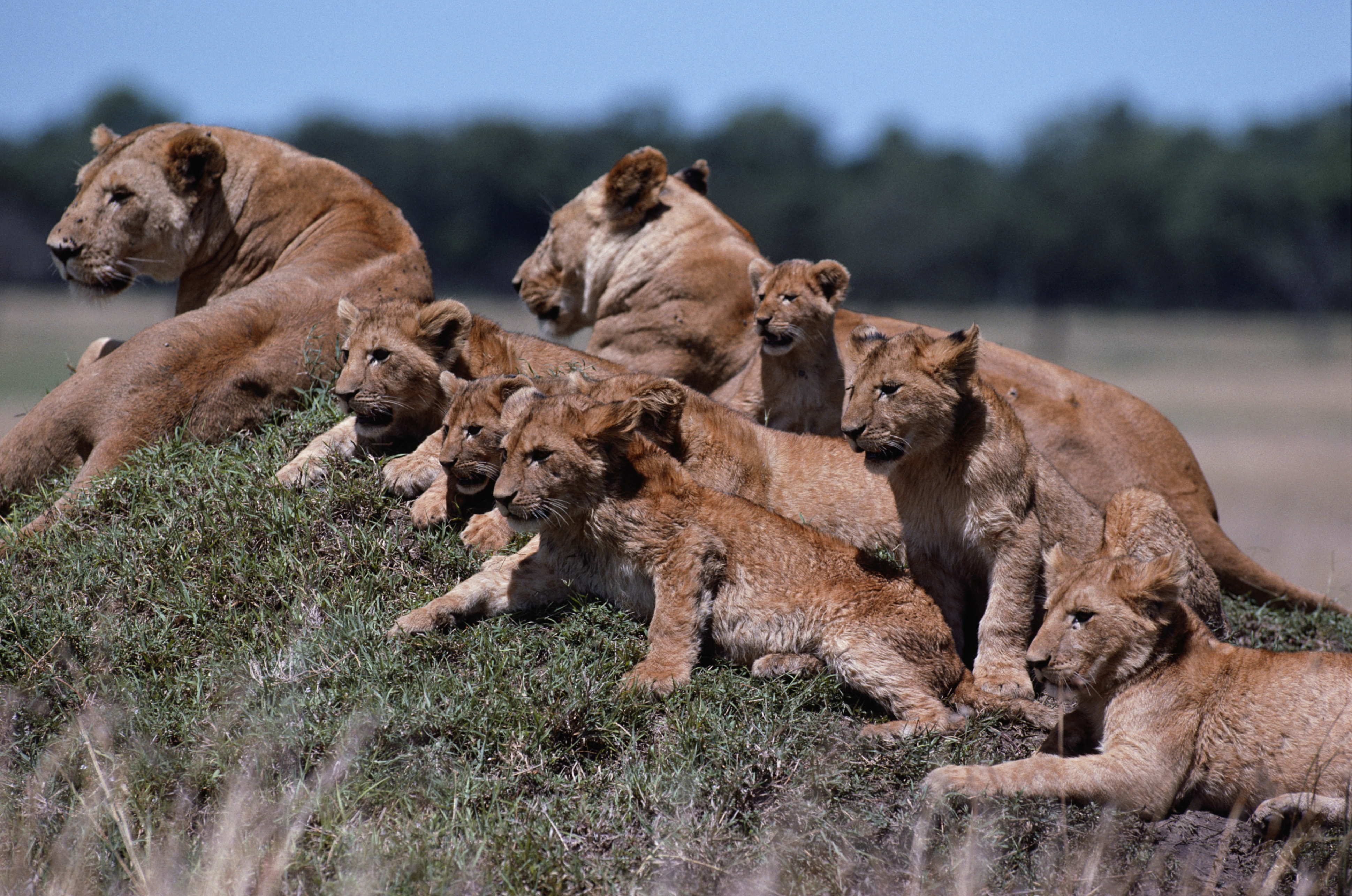
At first, the cubs live on milk. When they are about 11/2 months old, the mother leads them to an animal she has killed for their first meal of meat. The lioness usually does not have another litter until her cubs are 20 to 30 months old, old enough to hunt for themselves. Occasionally, a mother abandons her cubs. When food is scarce, the mother eats and lets the cubs starve. About half the cubs survive.
How a lion hunts
Lions have to kill to live. They prefer large prey—zebra, various kinds of antelope, buffalo, and warthog. But they will also eat fish, turtles, guineafowl—anything they can catch. They eat animals that have died from disease, and even take prey from cheetahs or hyenas.
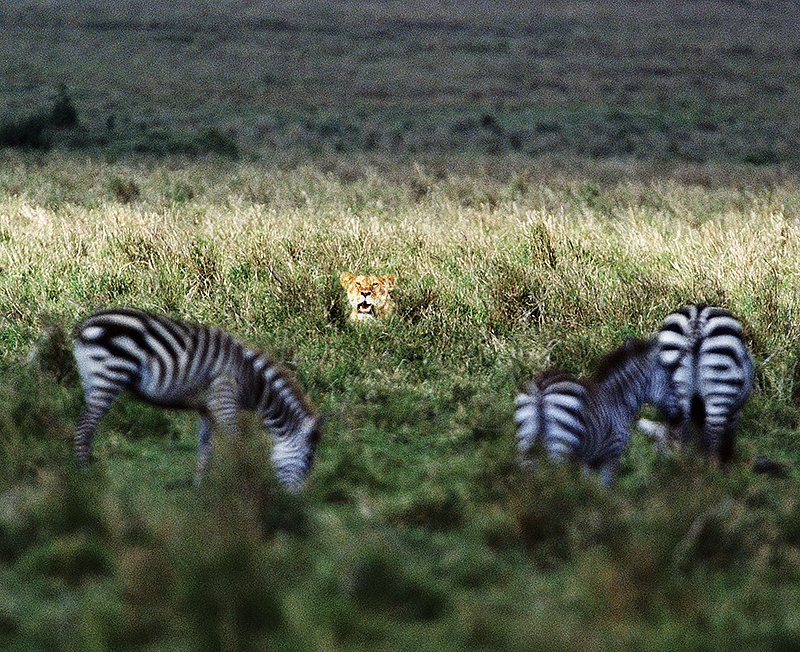
Lionesses
The lion lives a life of feast or famine. It may not be able to catch an animal for perhaps a week. But it usually catches something to eat every three or four days. Then the lion stuffs itself. A male lion can eat 75 pounds (34 kilograms) of meat in one meal. After killing an animal, the lion often drags it to a shady spot. One lion can drag a 600-pound (270-kilogram) zebra, something that six people would find difficult to do. All members of the pride eat together, with much growling and snarling as each animal tries to get the “lion’s share” of the meat.
Catching a large animal is not easy for the lion. Most of its prey can run faster than the lion, which has a top speed of about 35 miles (56 kilometers) per hour. A lion normally must surprise its victims by stalking. After locating the prey, the lion moves slowly toward it, its body close to the ground. When it is about 50 feet (15 meters) away, it rushes forward, grabs the rump, side, or head of the animal, and pulls it to the ground. Then it usually seizes the prey’s throat in its mouth and strangles it.
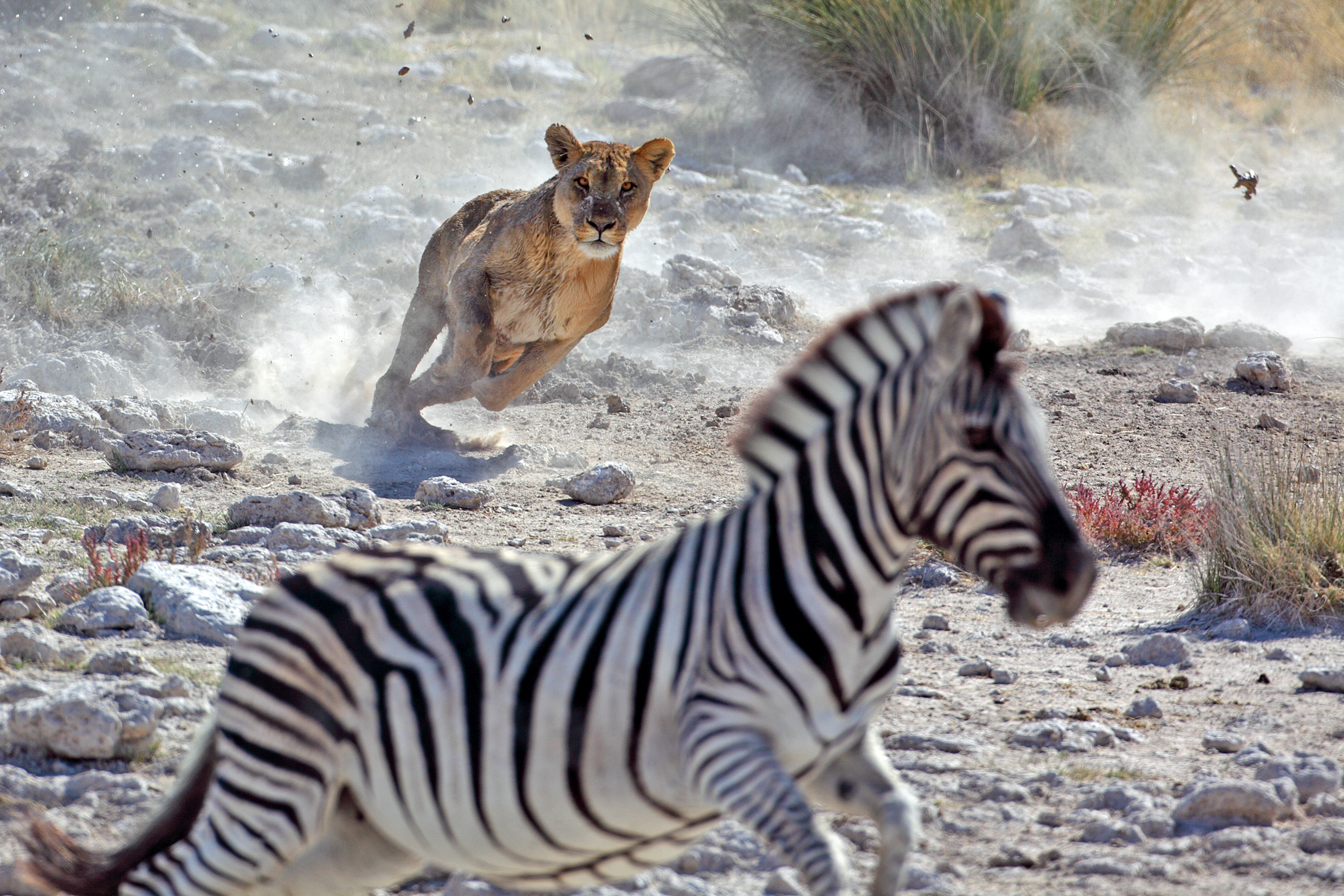
Lions often hunt at night because they can surprise their prey more easily in the dark. Nature has equipped the lion well for this task. Its gold-colored eyes can see in the dark, and the lion has excellent senses of hearing and smell. Sometimes several lions hunt together. While several hide, others circle the prey and chase it toward the waiting lions that are crouched in the high grass. The male lions in the pride ordinarily let the lionesses do the hunting. But they kill for themselves when they find prey. Cubs learn to hunt by watching the adults.
Lions and people
Hunting lions.
Whenever lions and people come into contact, the lion always loses. People have killed the lions in most of Asia and much of Africa. Lions kill cows, goats, and other livestock for food. And on rare occasions they kill people. So people killed lions to protect themselves and their property.
Loading the player...Lion
For hundreds of years people have also hunted lions as a way of showing courage. In about 1375 B.C., the Egyptian pharaoh (ruler) Amenhotep III hunted lions with bow and arrow from a chariot. He killed 102 in this manner. During the Seventh Crusade, Saint Louis and his followers chased lions on horseback and shot them with crossbows. Warriors of the Maasai people in East Africa used to hunt lions on foot.
The Asiatic lion is an endangered species. The only Asiatic lions that remain in their natural habitat live in India’s Gir Forest sanctuary. But the people who live there have destroyed much of the lions’ habitat by cutting down trees for fuel and timber. Deer and other natural prey are scarce in many areas, and so the lions have killed domestic animals, such as cattle, for food. This has made the lions unpopular with farmers in the area.
African lions have a better chance for survival. Africa has many reserves where lions may not be shot, although people still hunt them illegally. Hunters are allowed to kill lions in other areas, but they must have a special license. However, farmers poison many lions to protect their livestock, and lion numbers are in rapid decline outside of reserves.
The lion tries to avoid contact with people. It rarely attacks people unless it is tormented or injured. For example, a person can be within 40 feet (12 meters) of lions in the Gir Forest without danger. People there seldom harm the lions. But when provoked, and particularly when wounded, the lion is extremely dangerous.
Lions in captivity.
Lions have been kept in captivity for centuries. Pharaoh Ramses II took a lion into battle as a mascot. The Roman emperor Elagabalus rode in a chariot that was pulled by lions. Trained lions have always been a favorite attraction in circuses and menageries (collections of wild animals). In the past, wildlife traders caught many lions in the wild and took them to zoos and circuses. Collectors trapped the lions in nets or in pits dug in the ground. Sometimes, they took cubs from the cubs’ mothers. But today, many countries ban circuses from exhibiting such wild animals as lions.
Hundreds of lions live in zoos around the world. Zoos support breeding programs to help prevent lions from dying out. Some lionesses in zoos have as many as three litters in one year.
